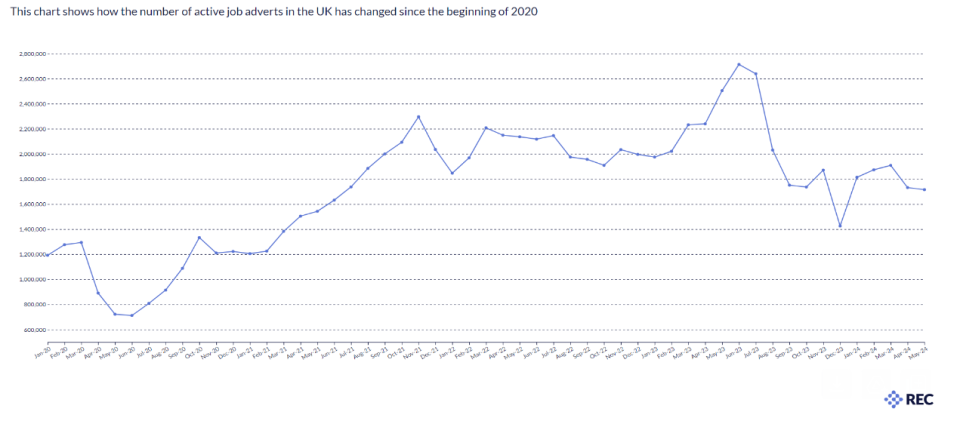Demand for workers remains strong despite loosening labour market

Demand for workers remains relatively high despite growing evidence that the Bank of England’s interest rate hikes are taking their toll on the labour market.
According to the Recruitment and Employment Confederation (REC)’s labour market tracker, there were still over 1.7m job postings in May, suggesting that labour demand remains relatively stable.
Although this was 0.7 per cent lower than the previous month, the number of vacancies remained above pre-pandemic levels.
The roles with the largest number of new job postings in May were stonemasons, building and civil engineering technicians and forestry workers.
“The number of active job adverts remains above 1.7m which shows steady demand for workers despite slow progress in the wider economy,” Neil Carberry, chief executive of the REC said.
“Employers are intent on hiring and investing in their own business, but are acting more cautiously because of economic and political uncertainty.”

The figures come just a week after the latest official report on the labour market, which showed that unemployment had increased to 4.4 per cent.
This puts unemployment at its highest level since September 2021, meaning an extra 190,000 people are out of work compared to the final quarter of last year.
Although the total number of vacancies remains higher than pre-pandemic, increasing rates of joblessness means the vacancy-to-unemployment ratio – a measure of labour market tightness – is now below pre-Covid levels.
The REC’s survey also indicated that there had been a fall in demand for summer seasonal work, potentially due to April’s near 10 per cent increase in the National Minimum Wage.
A number of sectors saw significant falls in demand for summer occupations compared to last year. Job postings in restaurants and catering establishments were down 38 per cent in April and May 2024 compared to last year, while hotels and accommodation saw a fall of nearly 45 per cent in job postings.
“A second big increase in the national minimum wage has affected hiring levels in key sectors,” Carberry said.

 Yahoo Finance
Yahoo Finance 